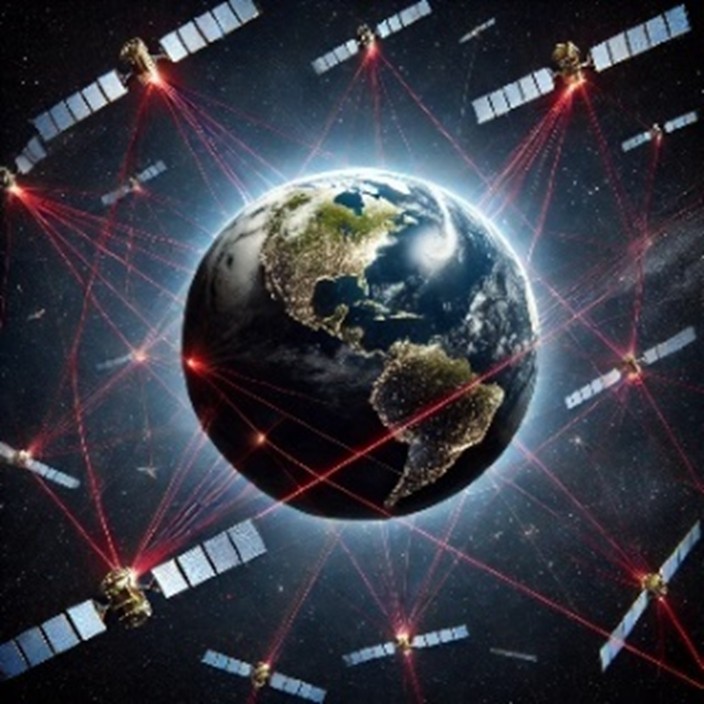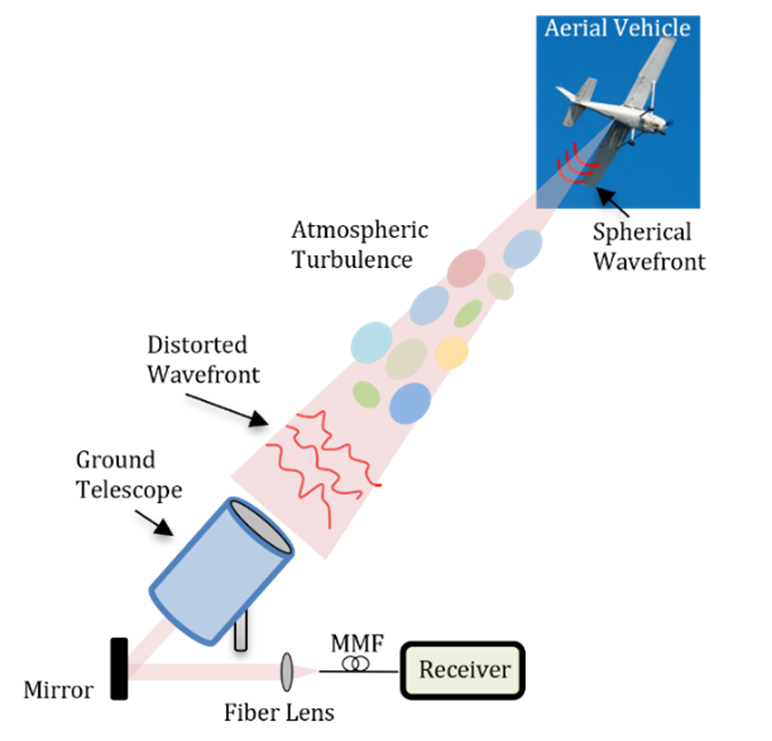Programmable Photonics for Quantum Space Networks
2025 - Roudas
Prof. Ioannis (John) Roudas, Prof. Brock LaMeres, Prof. Kevin Repasky, Dr. Matt Jaffe

NASA and other space agencies, as well as private companies, are developing free-space optical (FSO) communication systems to meet the growing demand for high-speed connectivity in space missions. These systems will connect space probes, satellites, aircraft, UAVs, and ground stations into a space internet of things that can host both classical and quantum applications.
When laser beams travel through Earth’s atmosphere, they refract, diffract, and scatter due to atmospheric turbulence—random temperature-induced variations in the refractive index of air. These effects distort the phase front of the received optical wave, leading to intensity fluctuations (scintillation), beam wandering, and signal fading at the receiver. This lack of reliability on behalf of FSO links is a major obstacle to the widespread adoption of optical communications for space missions.
To overcome this impairment, adaptive optical systems can be used to continuously correct phase distortions in real-time, ensuring stable and efficient laser communications for classical and quantum networks. Conventional adaptive optics in astronomical telescopes rely on slow, bulky, and expensive deformable mirrors. The challenge for space optical communications is to develop compact, real-time adaptive optical equalizers that correct quickly turbulence-induced distortions without excessive weight, power consumption, or complexity. Photonic integration, which miniaturizes thousands of optical components onto a single chip, addresses these challenges while reducing costs through mass production.
This project focuses on programmable photonic integrated circuits (PICs), analogous to electronic field-programmable gate arrays (FPGAs), which can be dynamically reconfigured to perform different functions. In collaboration with the Optics and Photonics Group at NASA’s Glenn Research Center (GRC), a multidisciplinary team at Montana State University (MSU) will design, simulate, and experimentally characterize programmable PIC architectures for optical signal processing in future quantum space networks.

The project consists of four key tasks. First, the MSU team will design and simulate scalable adaptive equalizer architectures based on Mach-Zehnder interferometer meshes and phase shifters for integration into programmable PICs. Second, the MSU team will build and characterize a 2×2 tabletop adaptive equalizer using free-space optical components to evaluate its performance under artificial turbulence conditions. For this purpose, the MSU team will develop FPGA-based signal processing to be used for the control of the equalizer. In the third task, MSU will explore the use of programmable PICs for interconnecting quantum memories based on neutral atom arrays. Finally, the NASA GRC team will fabricate and demonstrate working prototype photonic chips, providing realistic specifications and technical support for the first three tasks.
The project builds on MSU’s quantum technology infrastructure, including the Applied Quantum CORE, MonArk NSF Quantum Foundry, and Montana Microfabrication Facility (MMF), reinforcing MSU’s strategy to invest in classical and quantum photonics technologies and aligning with Montana’s growing optics and photonics industry.
NASA EPSCoR funding is critical as it enables a strategic partnership between MSU and NASA GRC’s Optics and Photonics Group. This collaboration advances programmable photonic integrated circuits (PICs) for free-space optical (FSO) communications, aligning with NASA’s goals in optical communications and quantum networking. Upon project completion, MSU’s ability to secure extramural funding for programmable PICs will significantly improve. Additionally, it will foster workforce development in Montana, training students and researchers in high-tech fields essential to NASA’s mission.
